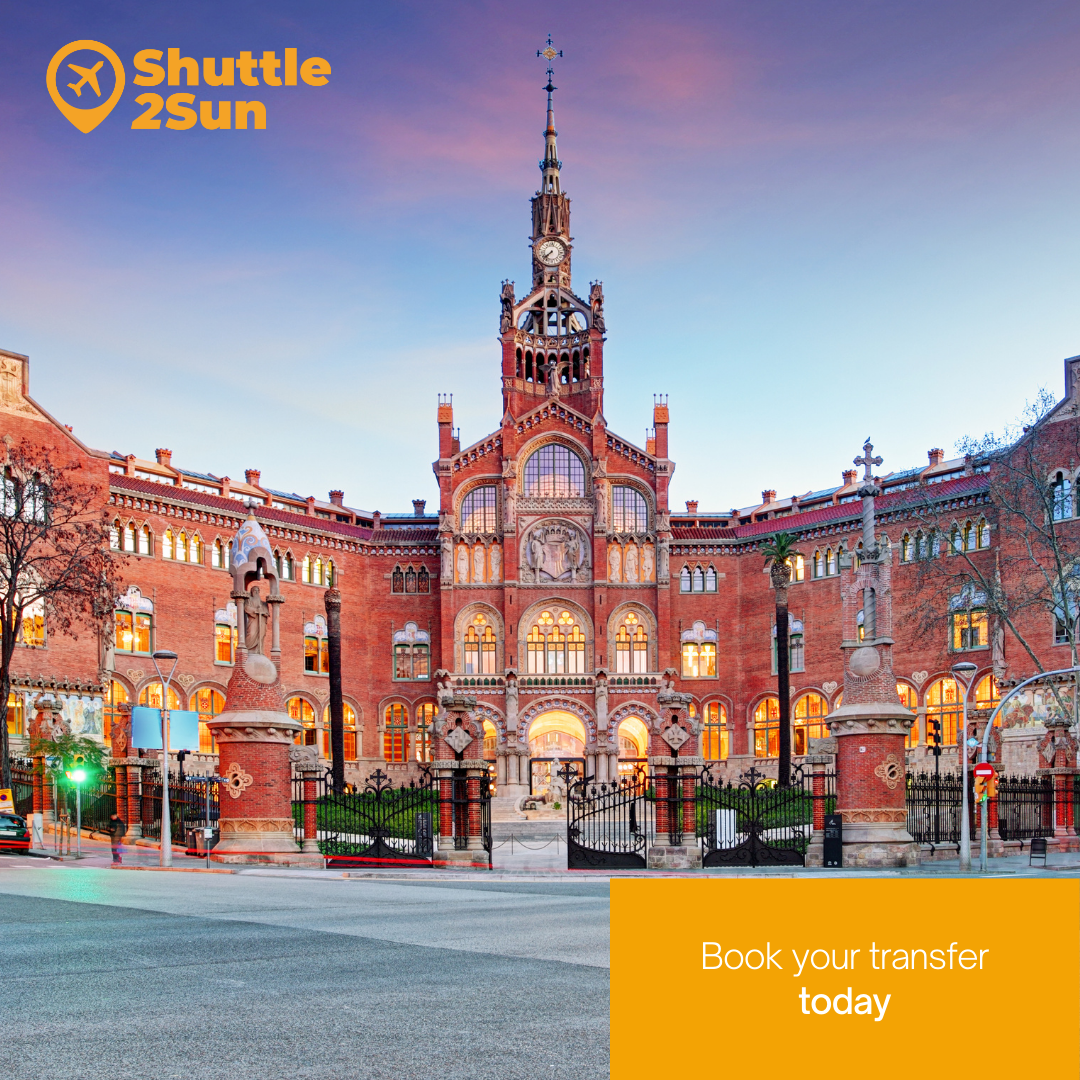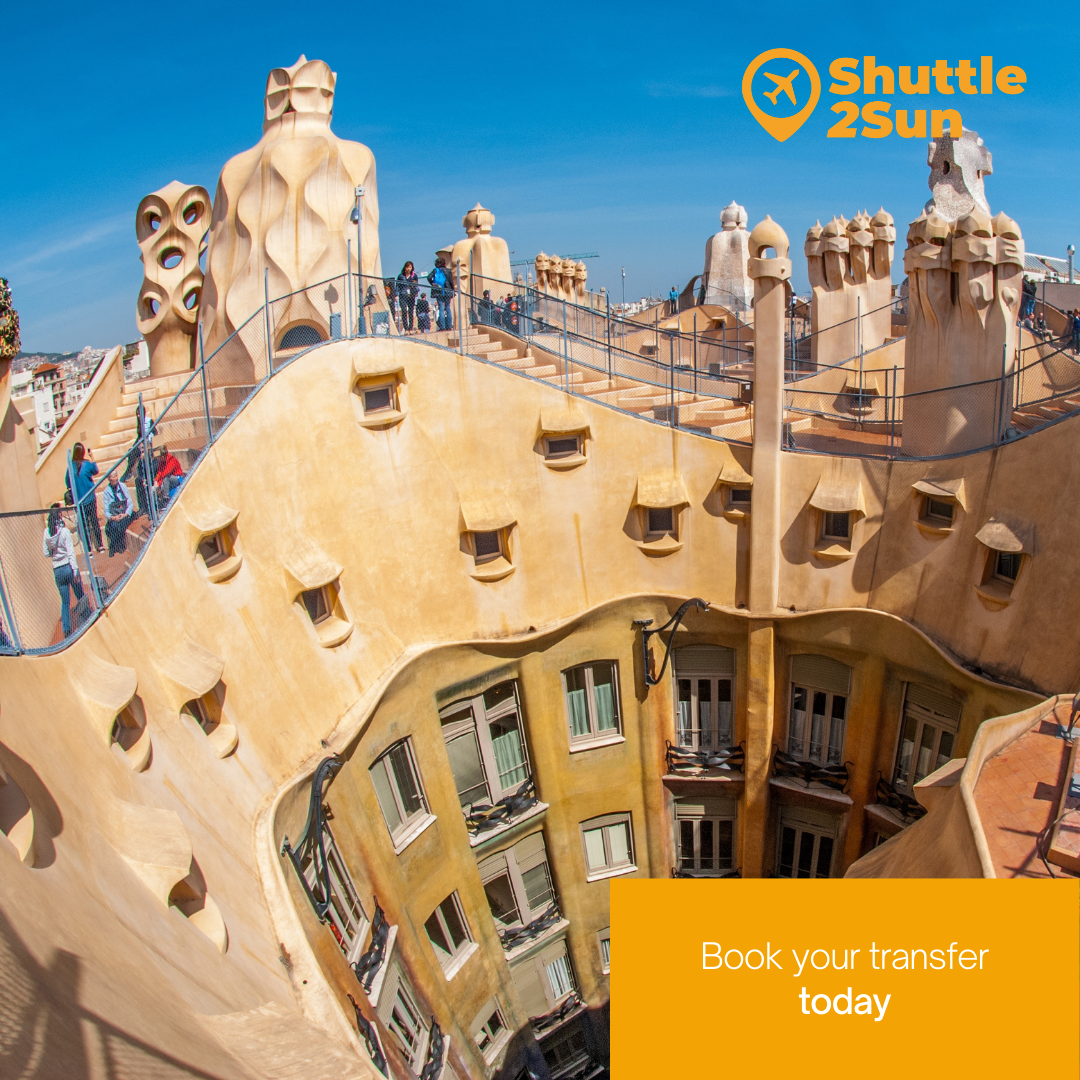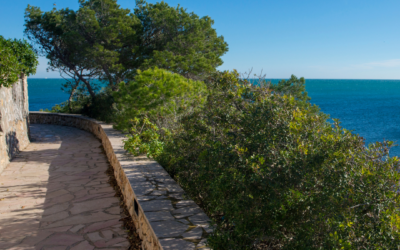Art shines in all its splendour in the most emblematic streets of Barcelona, the Catalan capital that has seen the growth, over the centuries, of renowned artists and architects, who have left an impressive mark in many corners of Barcelona, as well as in those places that are still unknown to a large part of the population.
One of the artistic movements that have most marked the architecture of Barcelona has been Modernism, also known as ‘Art Nouveau’, a creative current of the late nineteenth and early twentieth century that stands out for wanting to break with all previous styles, revolutionizing the existing standards so far.
In this publication, we are going to tell you about the many buildings that make up the modernist heritage of Barcelona. If you visit Barcelona and you want to see them in person, we recommend Shuttle2Sun‘s shared transfer services and private transfer services, low-cost and sustainable, available from Barcelona airport, Barcelona port, Reus airport, Girona airport and Camp de Tarragona AVE train station.
The ‘Quadrat d’Or’, in L’Eixample, the most prominent district
Barcelona, in the mid-19th century, with industrialisation, began to experience great demographic growth that led to the need to extend the city beyond the existing city walls. The Cerdà Plan was a reform project that completely changed the appearance of Barcelona, with the creation of promenades and wide streets, in the form of a grid, with gardens, which would divide the houses into octagonal blocks. This is what we know today as L’Eixample.
At the same time, another of the events that marked the growth of Barcelona was the holding of the Universal Exhibition in 1888 in Parc de la Ciutadella. This event marked a turning point in the city’s reputation, turning it into a tourist icon that has endured over the years.
With this new urbanism, the existing bourgeoisie competed to build the most striking and beautiful building in the district; and, consequently, along L’Eixample, houses began to be built following the emerging architectural style of the time, Modernism.
As a result, the famous ‘Quadrat d’Or’ (Golden Mile) appeared, an area located between Carrer Aribau and Passeig de Sant Joan, in the vicinity of Passeig de Gràcia, where many modernist jewels are concentrated.

In this area, three buildings stand out above the rest, standing side by side in a row, known as the block of discord: Casa Lleó i Morera, Casa Amatller and Casa Batlló. But first, let’s get to know their architects, three great examples of Catalan Modernism.
Discover all the modernist buildings in Barcelona, travelling to the capital with Shuttle2Sun‘s shared transfer services and private transfer services, low-cost and sustainable, from Barcelona airport, Barcelona port, Reus airport, Girona airport and Camp de Tarragona AVE train station.
Lluís Domènech i Montaner, Josep Puig i Cadafalch and Antoni Gaudí
If you visit Passeig de Gràcia, just where these three houses we have mentioned are located, between Carrer d’Aragó and Carrer Consell de Cent, you will find hundreds of curious onlookers enjoying the lines and elements that make up their façades. Casa Lleó i Morera, Casa Amatller and Casa Batlló stand at street level, making modernism shine in all its splendour. But what do we know about their creators?
The first to see the light of day was Casa Amatller, designed for the Amatller family in 1900 by the architect Josep Puig i Cadafalch. Its structure had already been created, and the artist oversaw completely remodelling its façade, taking inspiration from other styles, such as Romanesque and Catalan Gothic, and thus achieving a unique combination, full of symbolism.

Six years later, the architect Lluís Domènech i Montaner remodelled Casa Lleó i Morera, formerly known as Casa Rocamora, inherited by Francesca Morera Ortiz, a descendant of a family of Indianos who had made a living from the sugar cane trade in Puerto Rico. This family building stands out for the countless sculptural details that adorn its façade.
Parallel to the latter, Casa Batlló was completely refurbished, reflecting the creative freedom of the renowned Antoni Gaudí, the greatest role model of Catalan modernism, who created numerous works of art in Barcelona, such as the Sagrada Familia, Barcelona’s greatest icon; La Pedrera or Casa Milà; the Güell Palace; Park Güell; Casa Vicens; the Teresian College; Casa Calvet and the Bellesguard Tower, among others. You can read more information about the buildings of this famous architect in our post “Antoni Gaudí: All the works you can visit in Barcelona“.
Hospital de la Santa Creu i Sant Pau and Palau de la Música Catalana
Another building that deserves a place in our publication is the Hospital de la Santa Creu i Sant Pau, designed by Lluís Domènech i Montaner in the 1930s and declared a World Heritage Site by UNESCO. This architectural proposal, made up of different pavilions, aimed to create an enclosure with the capacity to treat up to 1,000 patients, and to offer a peaceful and pleasant space, thanks to the gardens that complemented this small city, as a therapeutic measure.
On the other hand, we must mention another exuberant modernist jewel, the Palau de la Música Catalana, home of the Orfeó Català, built during the first decade of the 20th century, also by the architect Domènech i Montaner. Its façade includes the sculpture “La cançó popular catalana”, a work by the Catalan Miquel Blay i Fàbregas, which represents the Catalan people and traditional music.
Other buildings worth visiting
Barcelona is the city with the most Modernist-style buildings on the World Heritage list. Apart from all the works we have mentioned, it is also worth mentioning others, such as the Antiga Fàbrica Casaramona, where CaixaFòrum is located; the National Art Museum of Catalonia (MNAC); the Museum of Catalan Modernism. In addition to Casa de les Punxes; Cases Cabot; Casa Pia Batlló; Casa Enric Batlló; Casa Serra; Casa Sayrach; Casa Fuster; Casa Comalat; Palau del Baró de Quadras; Casa Thomas; Palau Montaner and Castell dels Tres Dragons, among many other places.
Don’t think twice and come to Barcelona to enjoy its modernist architectural heritage. Remember, with Shuttle2Sun‘s shared transfer services and private transfer services, low-cost and sustainable, you can get to Barcelona from Barcelona airport, Barcelona port, Reus airport, Girona airport and the AVE Camp de Tarragona train station.



